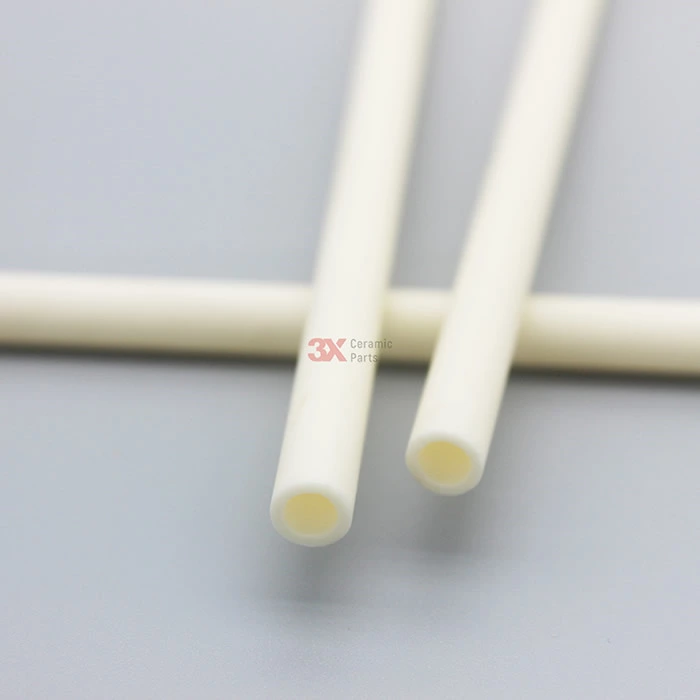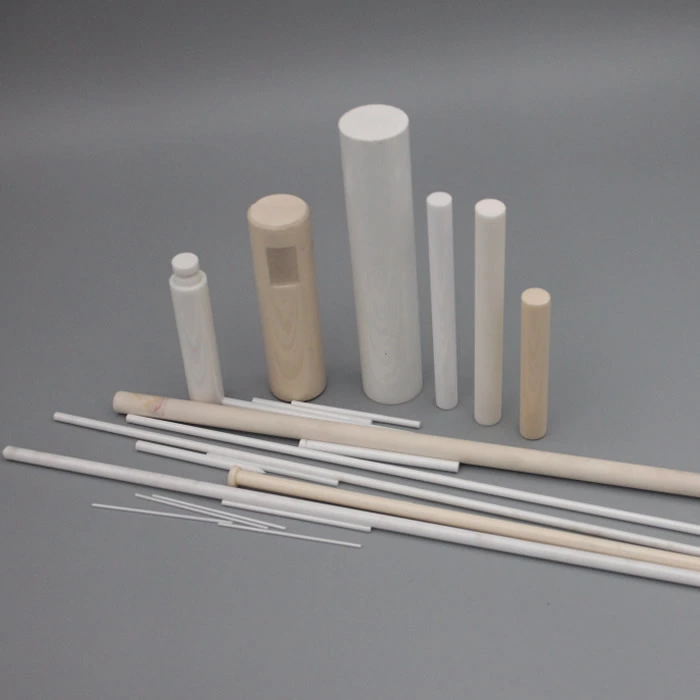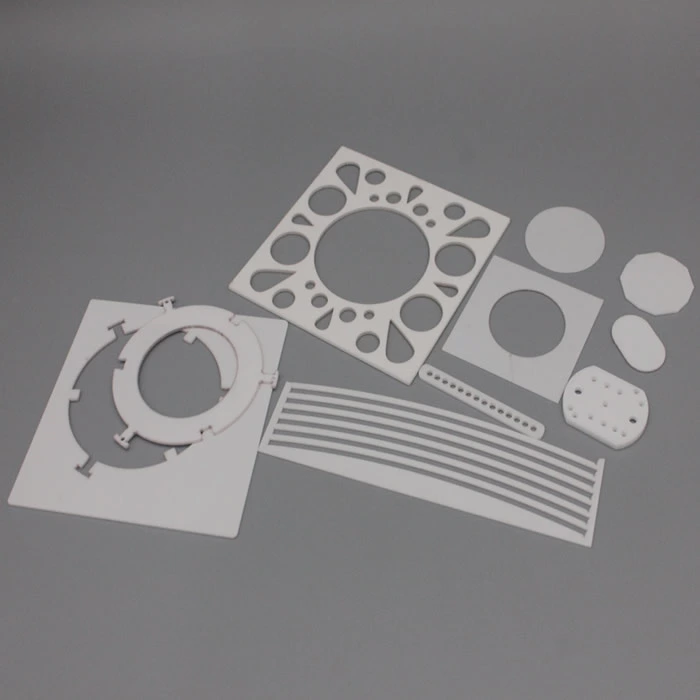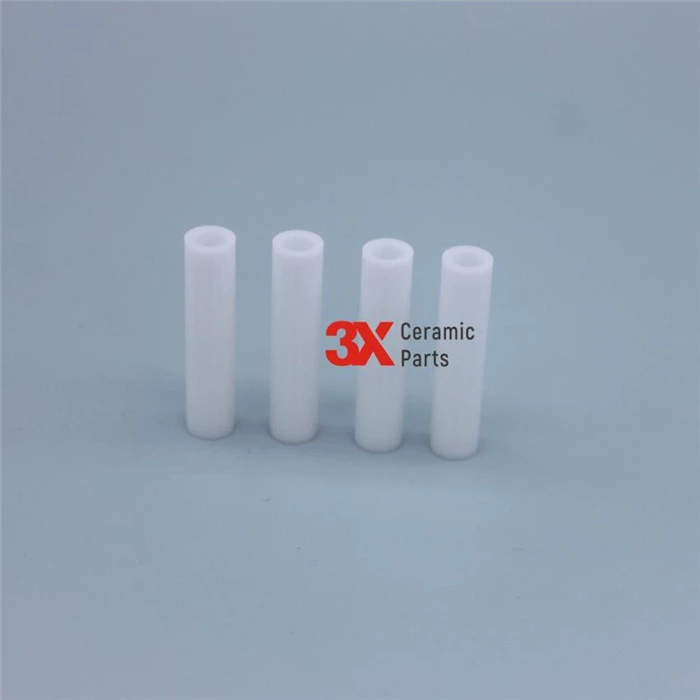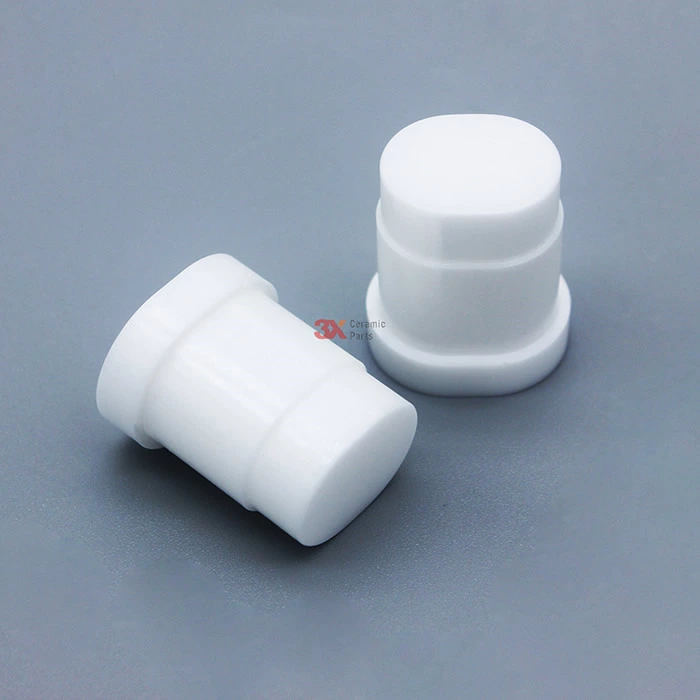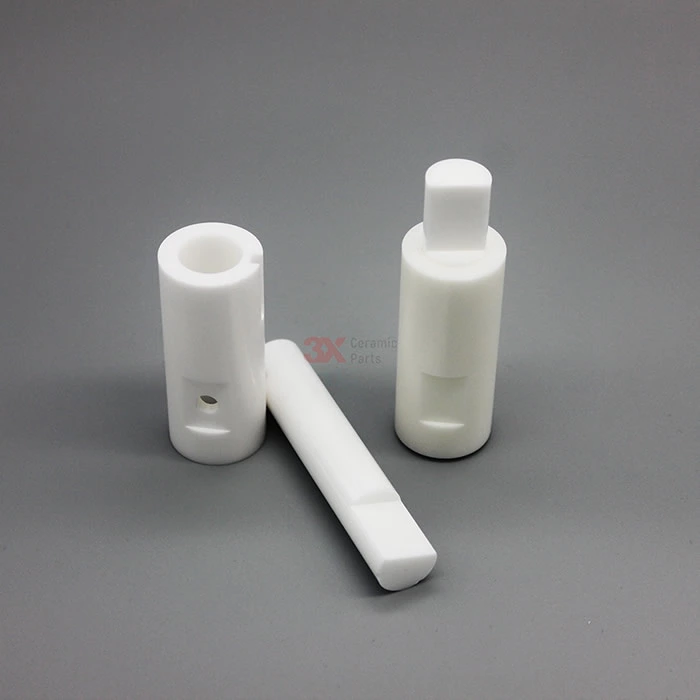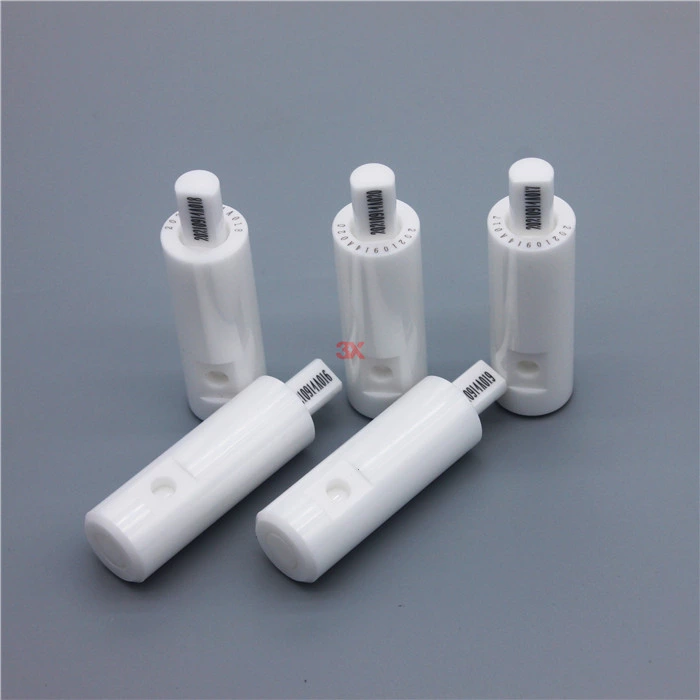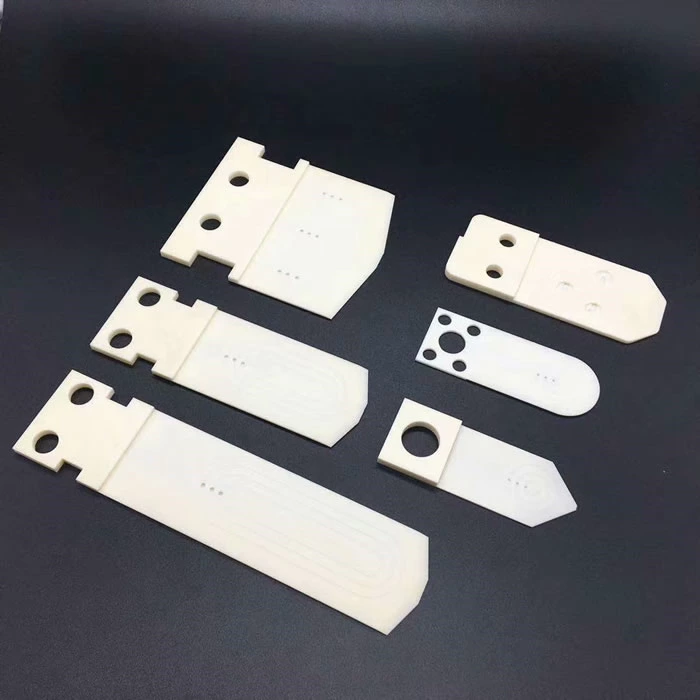Development Status of Ceramic Substrate for LED Packaging
As an important component of LED, packaging substrates are also changing with the development of LED chip technology. At present, metal and ceramic substrates are mainly used in LED heat dissipation substrates. Metal substrates are made of aluminum or copper. Because of their mature technology and cost advantages, they are currently used in general LED products. Ceramic substrates have high alignment accuracy and are recognized as excellent materials for heat conduction and heat dissipation in the industry. They are the most suitable heat dissipation scheme for high-power LED at present. They have been introduced into products by leading enterprises such as Cree, Osram, Ruifeng and Guoxing.
At present, ceramic substrates are produced on a small scale at home and abroad, and their future industrialization prospects will be affected by chip packaging. With the future development of LED chip packaging towards flip-flop or vertical technology, ceramic substrates will have a promising future.
- Ceramic substrates are mainly used for high power LED
The heat dissipation of LED will have an important impact on the efficiency, life and reliability of LED chips, which requires that the packaging of LED has good heat dissipation capability. Therefore, as an important component of LED, the packaging substrate is not only the role of the carrier, but also one of the important channels of heat dissipation. Its structure and materials play a key role in the process of heat dissipation. With the development of LED chip technology, the packaging structure of LED products has changed from pin-type packaging structure to SMD packaging structure to power-type packaging structure. The packaging substrate of LED has also developed from traditional glass epoxy resin to the mainstream metal materials. In recent years, the emergence of ceramic substrate has had a certain impact on the status of aluminum substrate.
At present, metal and ceramic substrates are mainly used in LED heat dissipation substrates. Metal substrates are made of aluminum or copper. Because of their mature technology and cost advantages, they are currently used in general LED products. Ceramic substrates have high alignment accuracy and are widely recognized as the best material for heat conduction and heat dissipation in the industry. Although the cost is higher than that of metal substrates, the heat dissipation and stability of lighting requirements are higher than those of notebook computers, television and other electronic products. Therefore, ceramics are used in many large international factories, including Cree, Osram, Philips and Nissan Chemical. Substrate is used as heat dissipation material of LED grain. In China, Ruifeng, Guoxing, Hongli, Jingke and Intellectual are all imported into ceramic packaging.
Due to the low thermal conductivity and poor thermal resistance of polymer insulating materials, if we want to improve the overall thermal conductivity and thermal resistance of aluminum metal substrates, we need to replace the insulating materials, but the use of insulating materials makes it impossible for the same lines to arrogate themselves on the aluminum metal substrates, so it is impossible to directly improve the thermal conductivity of aluminum metal substrates. Ceramic heat dissipation substrates have new thermal conductive materials and new internal structures to eliminate the defects of aluminum metal substrates, thereby improving the overall heat dissipation effect of the substrates. The following table shows the comparison between ceramic heat dissipation substrates and metal heat dissipation substrates.
- Different kinds of ceramic substrates have process bottlenecks that need to be overcome
At present, there are many kinds of ceramic heat dissipation substrates on the market, and the process is different. According to the heat dissipation needs of LED products, manufacturers choose suitable heat dissipation substrates, and ultimately achieve the best comprehensive effect in heat dissipation performance and cost.
Ceramic heat dissipation substrates are divided into alumina substrates and aluminium nitride substrates according to their materials, and single-layer substrates and multi-layer substrates (two layers) according to their structures. At present, there are four kinds of common ceramic heat dissipation substrates: LTCC (low temperature co-fired multi-layer ceramic substrates), HTCC (high temperature co-fired multi-layer ceramics), DBC (direct bonding copper substrates), DPC (direct copper plating substrates). HTCC belongs to the earlier development technology, but because of its high process temperature (1300-1600 C), the choice of electrode materials is limited, and the cost of production phase is limited. When it is expensive, these factors promote the development of LTCC. Although LTCC lowers the co-firing temperature to about 850 C, technical problems such as size accuracy and product strength need to be solved. DBC and DPC are mature and energy-producing technologies developed in recent years, but for many people, these two technologies are still very strange, and may even be misunderstood as the same process.
DBC combines Al2O3 with Cuplate by high temperature heating. The technical bottleneck of DBC is that it is not easy to solve the problem of micro-pore between Al2O3 and Cuplate, which makes the productivity and yield of the product more challenged. DPC technology uses direct coating technology to deposit Cuon Al2O3 substrate. This process combines material and film technology, and its products are the most commonly used in recent years. Ceramic heat dissipation substrates, however, require higher integration ability of material control and process technology, which makes the technical threshold of stepping into DPC industry and stable production relatively high.
- Ceramic substrates are required for packaging new vertical and flip chip
When vertical silicon chip is packaged, ceramic substrate is usually used as thermal conductivity and electrical carrier to obtain superior thermoelectric effect. In flip chip packaging, ceramic substrates can be selected as thermal conductivity and electrical carriers to obtain superior thermal and electrical effects, of course, copper substrates can also be used, which mainly depends on who can better solve the three-person problem of lamps and lanterns. At present, 95% of the mainstream application market of LED chips in China is officially installed chips. According to Zhang Yu, technical vice president of Yingrui Photoelectric Technology (Shanghai) Co., Ltd., who spoke at the 13th Five-Year Electronic Information Symposium in Shanghai, the domestic demand for flip-chip and vertical chips for LED will increase steadily to 20%-30% of the downstream application market during the 13th Five-Year Plan period.
Therefore, the development of flip-flop or vertical technology has absolute advantages for ceramic substrates, and ceramics will have more advantages in the future flip-flop or vertical packaging process. In addition, in the power range of 1-5W, ceramic packaging also has advantages, such as 3535 devices, which can be directly Molding, using a spotlight cup to Molding it on the ceramic substrate. The change of encapsulation mode will lead to the change of substrate materials, so the encapsulation mode of flip chip may also lead to a new generation of matching substrate materials.
- The future cost of ceramic substrates needs to be compressed and the prospects are promising.
At present, the main factor that leads to the different prices of substrate market is the difference of raw materials. For example, the current market is mainly divided into aluminium substrate, ceramic substrate and copper substrate. At the same time, on the basis of ordinary aluminium substrate, mirror aluminium substrate is gradually emerging in the current market. Aluminum-based, ceramic-based and copper-based are the most expensive ones. However, copper-based substrates are rare in the market at present. Their high prices lead to low performance-price ratio. Ceramic substrates are slightly more expensive than aluminium substrates, and the most widely used in the market should be aluminium substrates. However, at present, ceramic substrates are being developed on the market, and their costs are gradually decreasing. At present, the aluminium substrates are about 400 yuan per square, the copper substrates are about 800-900 yuan per square, the pure ceramic substrates are about 500 yuan per square, and the printed silver circuits are about 1000 yuan per square. The price is slightly higher.
Around 08, when domestic packaging enterprises just entered the field of display and backlight, Corey's high-power ceramic packaging light source came out. At that time, there was a wave of high-power ceramic packaging in China. Since then, the major domestic packaging enterprises have failed. The main reasons include: the immaturity of domestic packaging technology, the dependence of raw materials and ceramic substrates. The difficulty of oral supply and the lack of brand awareness. Since 2015, with the gradual maturity of domestic flip chip, the market demand for ceramic substrates has expanded. In addition, the sharp decline in material costs and the increase of domestic enterprises producing ceramic substrates seem to have seen a long-lost spring for domestic ceramic packaging practitioners. At the same time, with the emergence of CSP technology, in addition to the traditional outdoor lighting market and the bright flashlight market, high-power ceramic packaging has begun to penetrate into automotive headlights, Flash LED, ultraviolet LED and other fields. Therefore, its prospects look very promising.
Characteristic comparison of ceramic heat dissipation substrates
At present, foreign ceramic substrate manufacturers include Lamina Company, DuPont Company, Sumitomo Metal Electronic Devices Company, Yonhuagong Company, etc., and domestic enterprises such as Yimei Core Light, R&D Optoelectronics, etc. Among them, Kangchi Optoelectronics Technology Co., Ltd. jointly developed and obtained the national utility model patent in two years with Shanghai Silicate Research Institute of Chinese Academy of Sciences. The new K9-H ceramic LED composite heat dissipation material has been successfully applied to LED bulbs and achieved mass production last year.


